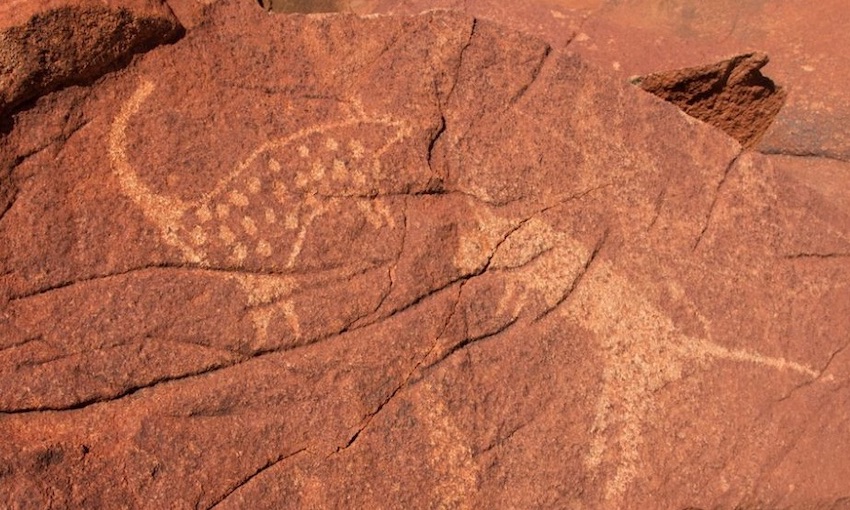PILBARA Ports Authority is delivering graffiti management training to help combat graffiti at the National Heritage Listed Murujuga National Park, located near Karratha in the North West of Western Australia.
Pilbara Ports Authority heritage specialist Robert Brock has been delivering the training to Indigenous rangers from the Murujuga Land and Sea Unit and the Department of Biodiversity, Conservation and Attractions to help them identify, record and manage graffiti.
The training includes techniques to remove different types of graffiti, as well as how to mask scratchings, ensuring it blends in with the natural rock surface using oxide pigments.
Pilbara Ports Authority is also working with the Murujuga Land and Sea Unit rangers to develop their capability to undertake environmental management services on behalf of PPA, including weed management and vertebrate pest control.
Murujuga National Park, which is adjacent to the Port of Dampier, contains the world’s largest collection of rock art, with an estimated one million engravings. The majority of Murujuga National Park and the islands of the Dampier Archipelago are National Heritage Listed and are currently in the process of being considered for World Heritage Listing.
This training is in line with PPA’s Cultural Heritage Management Plan, which seeks to minimise impacts of port operations on heritage through engagement with local Traditional Owners.
The training also embodies the 2021 NAIDOC week theme Heal Country, which calls for greater protections of country, the land, the waters, heritage values and scared sites.
Mr Brock said, “NAIDOC Week is a timely reminder to reflect on the importance of protecting Indigenous land and culture – with the Port of Dampier being adjacent to the largest collection of rock art in the world.
“Pilbara Ports Authority is proud to deliver the graffiti management training and is committed to keeping the Murujuga National Park protected from vandalism.
“Our experience in heritage management and the assistance provided to the Murujuga and DBCA rangers is important in protecting these culturally significant artworks for generations to come.”

